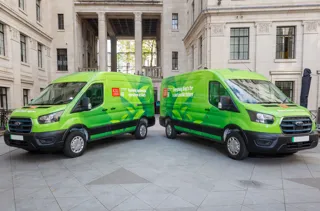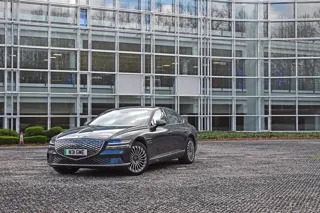Q:
How to deal with vehicle supply issues?
A:
Traditionally, issues such as range anxiety and a lack of suitable electric vehicle (EV) models have been seen as among the biggest obstacles to widespread adoption of the technology.
However, as more battery electric vehicles (BEVs) offering greater driving ranges have been launched and the choice of vehicles has blossomed, fleets have encountered another challenge: vehicle supply.
The Covid-19 pandemic was instrumental in a global shortage of semiconductors as the factories making them shut, leaving OEMs grappling with production stoppages.
This has not quelled the appetite for zero emission vehicles in the UK. In 2022, up to the end of February, 24,850 had been registered, an increase of 154% compared with the same period last year.
However, as demand has outstripped supply, fleets are facing long lead times for new vehicles, with some models, such as the Kia EV6, selling out its entire 2022 UK allocation well before the end of 2021.
“We are in a position where many company car drivers are placing huge pressure on their employees to move them into EVs because of the current benefit-in-kind advantages, but the supply to satisfy that demand is frequently unavailable,” said a spokesman at the Association of Fleet Professionals (AFP).
“Some manufacturers are even asking fleets to take certain EVs off choice lists because they simply do not know when any orders might be able to be fulfilled and, to fill the gaps, some employers are considering readopting internal combustion engine (ICE) vehicles, which seems like a deeply retrograde step, but might be the only practical solution.”
The supply issues mask the progress made by manufacturers in launching new models.
“We have seen the number of electric cars absolutely explode in terms of launches,” said a spokeswoman at Octopus Electric Vehicles.
“When I started doing this about five years ago, there were five vehicles that could do more than 150 miles: a couple of very expensive Teslas, a BMW i3, the Nissan Leaf and the Renault Zoe.
“Since, the number of models has skyrocketed. We’ve got a range of different vehicles to suit different situations, from city cars and family cars, all the way through to luxury cars.
“The lead times are challenging, though. Some of the Teslas we can get within, say, a couple of months, whereas some of the more luxury vehicles are even out at 18-month lead times.”
A spokesman at the Society of Motor Manufacturers and Traders (SMMT), said he expects the shortages to ease towards the end of 2022.
“There is the expectation supply will improve as the year goes on, particularly in the second half of the year, but there will still be ripples into 2023,” he said.
It is a similar situation for electric vans, said the spokeswoman at Octopus Electric Vehicles, with typical lead times of at least 12 months. “If a fleet is thinking it wants to get started on electrification, it should really get thinking about what it might want and get its orders in,” she said.
While the long lead times for BEVs will be a source of frustration for companies keen to accelerate their transition, they can also give fleets who are not as far advanced in their plans the time to focus and refine their strategies for when vehicles become more readily available.
> Interested in comparing electric vehicle data? Check out our EV tool.
> Interested in ensuring the efficient use of EVs. Check out our dedicated editorial sections: Insight & policy | EV news | Charging & infrastructure | Costs & incentives | Benefit-in-kind | EV case studies | EV road tests
> EVs by price: lowest to highest
















